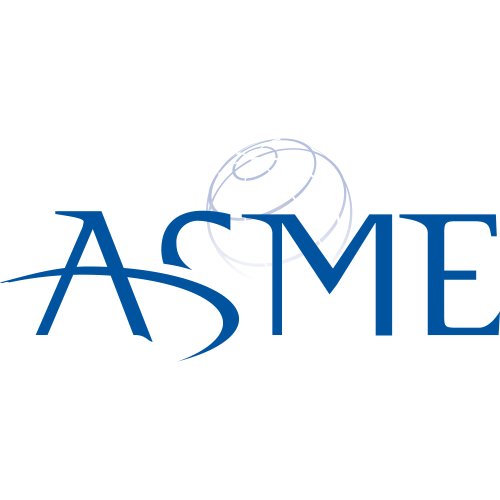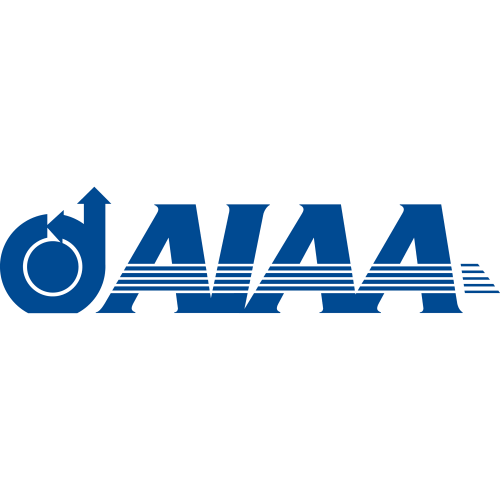Transient airflow structures and particle transport in a sequentially branching lung airway model
Considering oscillatory laminar incompressible three-dimensional flow in triple planar and nonplanar bifurcations representing generations three to six of the human respiratory system, air flow fields and micron-particle transport have been simulated under normal breathing and high-frequency ventilation (HFV) conditions. A finite-volume code (CFX4.3 from AEA Technology, Pittsburgh, PA) and its user-enhanced FORTRAN programs were validated with experimental velocity data points for a single bifurcation. The airflow structures and micron-particle motion in the triple bifurcations were analyzed for a representative normal breathing cycle as well as HFV condition. While both the peak inspiratory and expiratory velocity profiles for the low Womersley case (α=0.93) agree well with those of instantaneously equivalent steady-state cases, some differences can be observed between flow acceleration and deceleration at off-peak periods or near flow reversal, especially during inspiratory flow. Similarly, the basic features of instantaneous particle motion closely resemble the steady-state case at equivalent inlet Reynolds numbers. The preferential concentration of particles caused by the coherent vortical structures was found in both inhalation and exhalation; however, it is more complicated during expiration. The effects of Womersley number and non-planar geometries as well as the variations in secondary flow intensity plus pressure drops across various bifurcations under normal breathing and HFV conditions were analyzed as well. This work may elucidate basic physical insight of aerosol transport relevant in dosimetry-and-health-effect studies as well as for drug aerosol delivery analyses.
Top-30
Journals
|
2
4
6
8
10
12
14
|
|
|
Journal of Aerosol Science
14 publications, 8.92%
|
|
|
Physics of Fluids
12 publications, 7.64%
|
|
|
Journal of Biomechanical Engineering
10 publications, 6.37%
|
|
|
Annals of Biomedical Engineering
6 publications, 3.82%
|
|
|
International Journal for Numerical Methods in Biomedical Engineering
6 publications, 3.82%
|
|
|
Physical Review Fluids
4 publications, 2.55%
|
|
|
Experiments in Fluids
4 publications, 2.55%
|
|
|
European Journal of Mechanics, B/Fluids
4 publications, 2.55%
|
|
|
International Communications in Heat and Mass Transfer
4 publications, 2.55%
|
|
|
Aerosol Science and Technology
4 publications, 2.55%
|
|
|
International Journal of Heat and Mass Transfer
3 publications, 1.91%
|
|
|
International Journal of Environmental Research and Public Health
3 publications, 1.91%
|
|
|
International Journal of Heat and Fluid Flow
3 publications, 1.91%
|
|
|
International Journal for Numerical Methods in Fluids
3 publications, 1.91%
|
|
|
Journal of Applied Physiology
3 publications, 1.91%
|
|
|
Computers and Fluids
2 publications, 1.27%
|
|
|
Indoor and Built Environment
2 publications, 1.27%
|
|
|
Atmosphere
2 publications, 1.27%
|
|
|
Biomechanics and Modeling in Mechanobiology
2 publications, 1.27%
|
|
|
Respiratory Physiology and Neurobiology
2 publications, 1.27%
|
|
|
Particuology
2 publications, 1.27%
|
|
|
Computers in Biology and Medicine
2 publications, 1.27%
|
|
|
Journal of Biomechanics
2 publications, 1.27%
|
|
|
Inhalation Toxicology
2 publications, 1.27%
|
|
|
Comprehensive Physiology
2 publications, 1.27%
|
|
|
Biomicrofluidics
1 publication, 0.64%
|
|
|
Physical Review Letters
1 publication, 0.64%
|
|
|
AIAA Journal
1 publication, 0.64%
|
|
|
Journal of Fluids Engineering, Transactions of the ASME
1 publication, 0.64%
|
|
|
2
4
6
8
10
12
14
|
Publishers
|
5
10
15
20
25
30
35
40
45
50
|
|
|
Elsevier
49 publications, 31.21%
|
|
|
Springer Nature
19 publications, 12.1%
|
|
|
Wiley
14 publications, 8.92%
|
|
|
AIP Publishing
13 publications, 8.28%
|
|
|
ASME International
11 publications, 7.01%
|
|
|
Taylor & Francis
9 publications, 5.73%
|
|
|
MDPI
6 publications, 3.82%
|
|
|
American Physical Society (APS)
5 publications, 3.18%
|
|
|
SAGE
5 publications, 3.18%
|
|
|
American Institute of Aeronautics and Astronautics (AIAA)
3 publications, 1.91%
|
|
|
American Physiological Society
3 publications, 1.91%
|
|
|
Japan Society of Mechanical Engineers
2 publications, 1.27%
|
|
|
Mary Ann Liebert
2 publications, 1.27%
|
|
|
World Scientific
2 publications, 1.27%
|
|
|
The Royal Society
1 publication, 0.64%
|
|
|
Frontiers Media S.A.
1 publication, 0.64%
|
|
|
IOP Publishing
1 publication, 0.64%
|
|
|
AAGR Aerosol and Air Quality Research
1 publication, 0.64%
|
|
|
Proceedings of the National Academy of Sciences (PNAS)
1 publication, 0.64%
|
|
|
Annual Reviews
1 publication, 0.64%
|
|
|
American Chemical Society (ACS)
1 publication, 0.64%
|
|
|
ifmbe proceedings
1 publication, 0.64%
|
|
|
Institute of Electrical and Electronics Engineers (IEEE)
1 publication, 0.64%
|
|
|
Research Square Platform LLC
1 publication, 0.64%
|
|
|
5
10
15
20
25
30
35
40
45
50
|
- We do not take into account publications without a DOI.
- Statistics recalculated weekly.






















